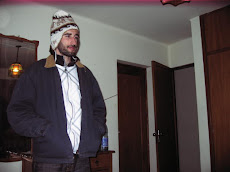SUCRE -- Since infancy, riding in cars, planes and trains has worked like a sleeping pill for me. On the four-hour flight from Miami to Lima, I fell soundly asleep on takeoff and apparently snored so loudly -- through dinner, drinks and the movie -- that it disturbed the other passengers. Last summer I slept through about 12 hours of a 22-hour train detour in Russia after a bombing on a train ahead of ours kept the entire nation and my friends and family at home wide awake and on edge.
But today I met my match in the flight from La Paz to Sucre. It was early, and I was tired. I was looking forward to the air nap. Driving out of the literal concrete canyon that is the city of La Paz to get to the airport was, I thought, the hard part. The airport is in El Alto, a vast, growing, impoverished city on the flat plain on the canyon rim above La Paz. From our vantage point on the ground, it looked like the pilots would have plenty of room to fly around those snowcapped mountains surrounding the city. Right?
We took to the air, the pilot sounding just as bored as usual giving details of weather and estimated arrival time. The mountains just kept getting bigger and bigger, as we got closer and closer. Black rock and white snow filled the horizon, vertical and menacing.
¨Oh my God,¨ Will said. ¨Do we have to clear THAT?¨
As we approached a ridge, the ground seemed to speed up under us like it does when the plane comes in for a landing. The flight attendants did not seem worried. They were giving the oxygen-mask demonstration. I paid extra close attention.
Then, as we passed the snowy peak of Illimani and his mountain friends, I saw what lay beyond: MORE mountains. Jagged spikes and soft folds appeared behind the first wave and stretched into the horizon. You could almost see the geologic forces twisting and shaping the Andes below us, the tectonic plates crashing together. This was why it took 15 hours to reach Sucre by bus, but only 45 minutes by air.
It went on like this forever. Then the ground started to speed up again, closer and closer. We must be landing, I thought. But there was no flat land in sight.
¨Where is he going to land this plane?¨I asked Will, like he would know. He just shook his head. ¨Where is he going to land this plane?¨ I might have repeated it a few more times.
No one was bracing for a crash. The other passengers were sipping their drinks, working on their laptops, harrassing the miniskirted flight attendants.
Then, just as we cleared a steep dropoff, a tarmac appeared. The wheels touched down. We breathed a sigh of relief.
The businessman next to me was sleeping. At least someone got a nap.
Tuesday, May 20, 2008
Subscribe to:
Post Comments (Atom)


3 comments:
Will:
As the South American correspondent for the CZ, could you check this out.
I just thought you would like to know that in Bolivia road cones are not always the tool of choice. Somtimes they use rocks, even car tires cut in half and glued to the payment! Weird huh!
Mary, Mother of God! You would've had to Medicare me on that flight!!!!!
That was supposed to be "medicate." Stupid spell check on my iPhone
Post a Comment